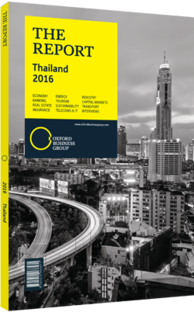Veerathai Santipraphob, Governor, Bank of Thailand, on the resilience of the country’s banking system: Viewpoint

In line with the trend of regional currencies, the baht’s recent movement has been largely influenced by external factors. Any imminent signals of the US Federal Reserve’s initial interest rate hikes or worse-than-expected data coming out of China would prompt capital outflows from emerging markets, thereby weighing down their currency values.
Furthermore, significant outflows could tighten financing conditions for domestic companies, in terms of both cost and availability of funds. This interplay of several risk factors is a challenge for business managers and investors alike.
However, international investors are being increasingly selective in their portfolio decisions. They no longer treat emerging markets collectively as a single asset class, but have learned to differentiate between economies. As such, even though emerging markets may generally move in the same direction, the actual adjustments across individual economies have been more uneven.
In this context, the degree of baht depreciation ranks within the middle range of regional movements, and our currency also closely tracks regional peers, though the level of volatility is moderate relative to our peers. This comes down to Thailand’s sound external position, which provides a cushion from volatility in the global financial markets, shielding the economy from potential problems.
The Thai banking system is resilient, with a high level of capital buffers and stable loan growth, despite some deterioration in loan quality. Banks have closely monitored their customers and have continued to maintain a high degree of loan loss provision as a buffer against bad loans.
They are also well capitalised, with the capital adequacy ratio at 17.3% and the Tier-1 ratio at 14.4% – among the highest in Asia. This suggests that our banking system has sufficient capital to shoulder unexpected loss and to accommodate credit expansion. The banks’ profitability will help enhance their capital base over time.
First, the Bank of Thailand will ensure ample liquidity in the system in order to accommodate economic recovery. As policy normalisation by the Fed becomes imminent, the risk of liquidity withdrawal from emerging markets increases. However, we anticipate a limited impact on the overall Thai economy as markets have already priced in the Fed’s initial hike. Besides, it was widely expected that the Fed fund rates would rise gradually from then on.
For now, despite slow economic growth in Thailand, overall credit to the private sector continues to expand at around 5%. Furthermore, enterprises have issued a sizeable amount of corporate bonds, leveraging on lower yields compared to 2015, and the commercial banks’ liquidity position is stable. All of these are indicators of favourable conditions for domestic financing. In the event that a sudden reversal scenario were to occur, the Bank of Thailand would make sure that liquidity will not become an impediment to economic recovery.
We will also ensure that the cost of funds accommodates the ongoing recovery. The two pre-emptive cuts in interest rates earlier in 2015, in response to greater downside risks to growth, have eased the domestic cost of funds. Low inflationary pressure also gives room for monetary policy to remain accommodating. This helps ensure that the overall monetary conditions are conducive to economic recovery. Yet we keep a cautious eye on risks to financial stability, especially in a low interest rate environment. Household debt, although it has stabilised, remains high in relation to GDP. We will continue to monitor the impact of the low interest rate on the search for yield and long-term saving behaviour. We are also vigilant on other pockets of risk which may have destabilising effects on the economy, such as those in the real estate sector. From a speech given December 2, 2015.
You have reached the limit of premium articles you can view for free.
Choose from the options below to purchase print or digital editions of our Reports. You can also purchase a website subscription giving you unlimited access to all of our Reports online for 12 months.
If you have already purchased this Report or have a website subscription, please login to continue.

